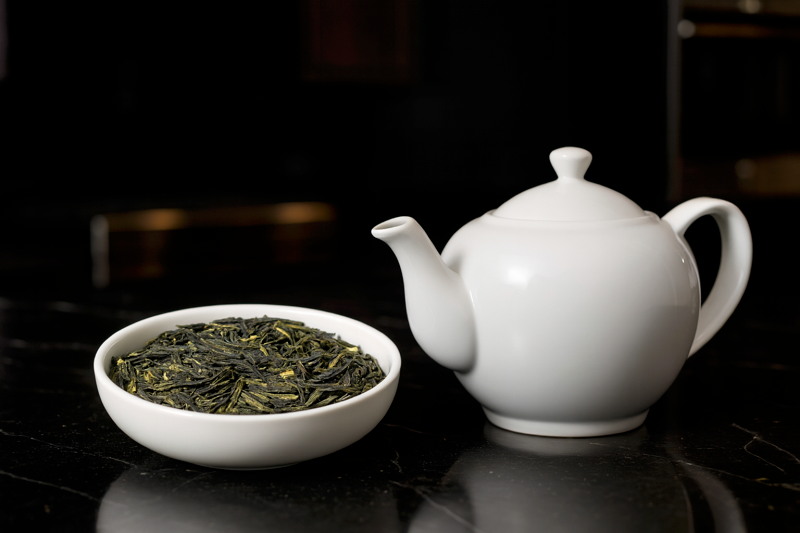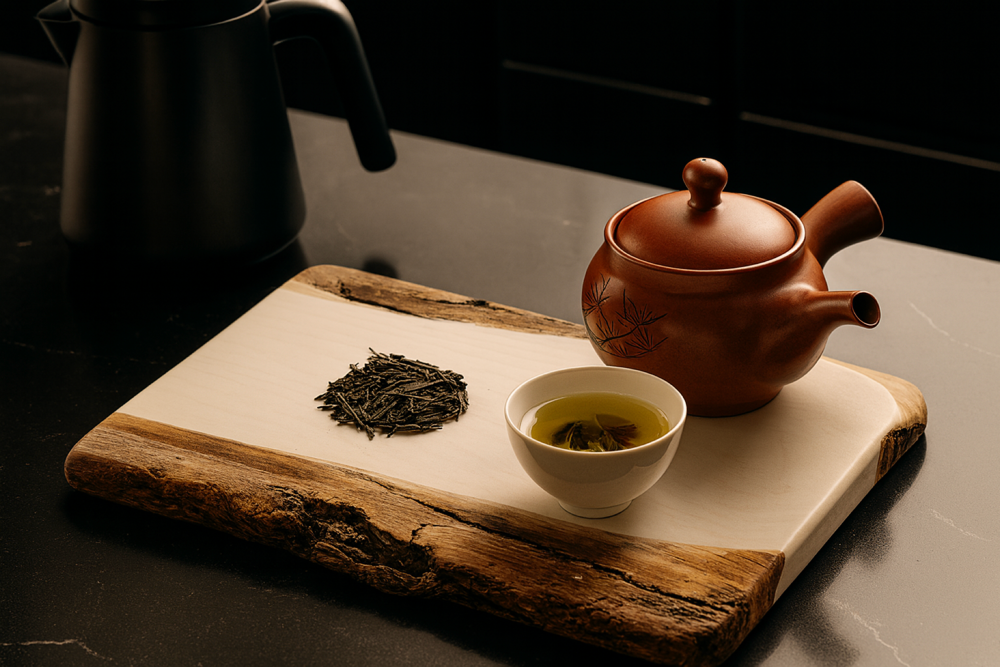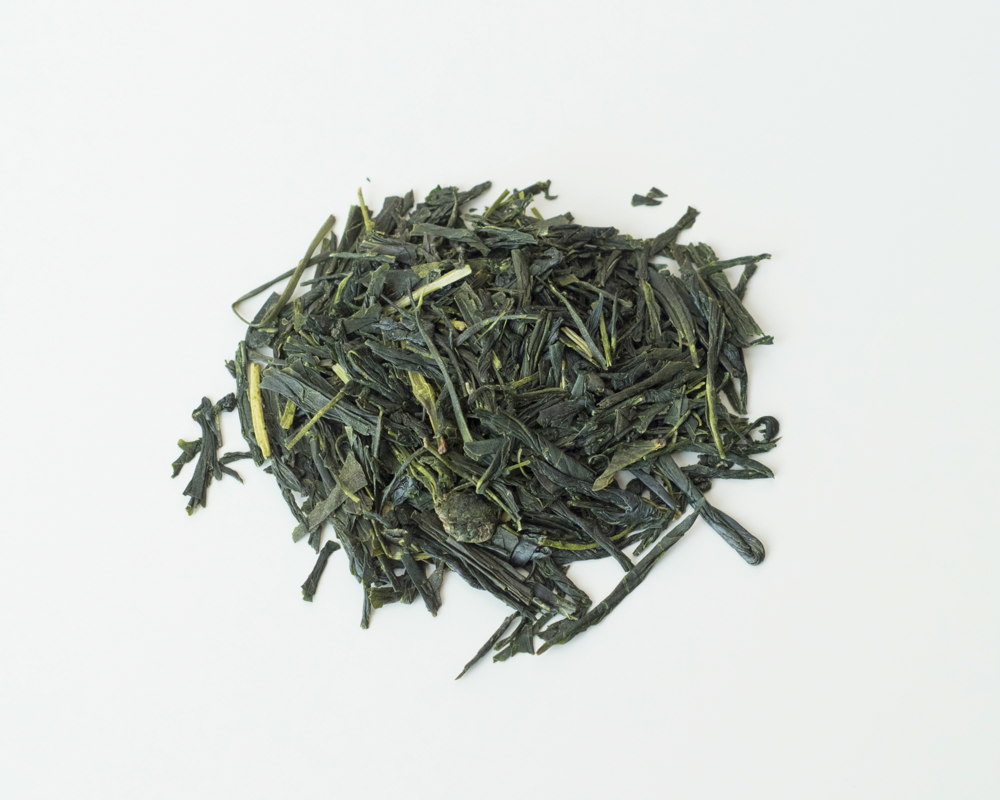Bancha
Rustic, smooth, and low in caffeine — the daily drink of the people.
- Category: Green tea (Camellia sinensis), usually from later harvests.
- Origin: Japan — widely produced in Shizuoka, Kyoto, and Kagoshima.
- Harvest: Second flush (nibancha) and third flush (sanbancha) leaves, picked in summer and autumn after the premium sencha harvest.
- Grade: Common Bancha; Aki-Bancha; Hime-Bancha / Kyobancha



Tasting Profile
Brewing Guide
- Tea-to-water ratio~5 g tea leaves per 200 ml water.
- Water temperature80–90 °C (176–194 °F).
- Steeping time30–60 seconds for first infusion; longer for subsequent steeps.
- Infusions2–3 infusions; later steeps bring out lighter, grainy sweetness.
Background & Story
Bancha is one of Japan’s most common and accessible green teas, often referred to as the “tea of the people.” Unlike premium teas such as gyokuro or shincha, which are harvested in early spring, bancha is picked later in the season, usually in summer or autumn. The leaves are larger, coarser, and contain more stems, giving the tea a rustic character that has long made it the everyday drink of Japanese households.
The processing of bancha is similar to sencha: freshly picked leaves are steamed to prevent oxidation, rolled, shaped, and dried. However, because bancha comes from later harvests, the flavor is less intense and less sweet than sencha. Instead, it offers a mild, earthy taste with straw-like and woody notes, sometimes with a subtle nuttiness. Its lower caffeine content compared to earlier flush teas makes it particularly suitable for children, the elderly, and for drinking throughout the day.
Historically, bancha’s affordability and gentle flavor made it a staple in rural communities. While sencha and gyokuro were prized as high-grade teas, bancha served as the everyday beverage, often consumed in large volumes during meals. Its modest nature earned it the nickname of “ordinary tea,” but over time it gained appreciation for its unique qualities. Regional variations developed, such as Kyobancha from Kyoto, which is roasted to create a smoky, almost hojicha-like flavor.
Nutritionally, bancha still carries the core benefits of green tea, including antioxidants, catechins, and trace minerals, though in smaller amounts than first-flush teas. Its reduced caffeine makes it gentler on the stomach, while still providing a refreshing and hydrating experience.
Today, bancha remains beloved in Japan as a humble but comforting tea. It embodies the balance between simplicity and tradition — a tea not meant for ceremony but for daily life, where its mild, approachable flavor and easy-drinking nature shine.
Benefits
- Low in caffeine, making it suitable for children, elderly, and evening drinking
- Provides antioxidants and catechins that support overall health
- Gentle on the stomach and easy to digest compared to stronger green teas
- Hydrating and refreshing for daily consumption in large amounts
- Affordable and accessible, allowing regular intake of tea’s nutrients
Serving Suggestions
Pairings
- Everyday Japanese meals such as rice, miso soup, and pickles
- Grilled fish or lightly seasoned meats
- Simple rice crackers (senbei) or onigiri
- Mildly sweet wagashi like manju or mochi
- Steamed or boiled vegetables with light seasoning
Teaware
- Kyusu (Japanese side-handle teapot)
- Yunomi (Japanese tea cup)
- Chazutsu (airtight tea canister)
Nutrition Facts
Serving Size: 1 cup brewed Bancha (240 ml)
| Nutrient | Amount per Serving | % Daily Value* |
|---|---|---|
| Calories | 0 | 0% |
| Total Fat | 0 g | 0% |
| Sodium | 0 mg | 0% |
| Total Carbohydrates | 0 g | 0% |
| Protein | 0 g | 0% |
| Vitamin C | 2–4 mg | 3–5% |
| Vitamin A (beta-carotene) | Trace | <1% |
| Calcium | 2–4 mg | <1% |
| Potassium | 15–30 mg | <1% |
| Magnesium | 1–3 mg | <1% |
| Caffeine | 10–20 mg | — |
| L-theanine | 4–6 mg | — |
| Catechins (EGCG) | 15–30 mg | — |
| Polyphenols | 40–60 mg | — |
| Chlorophyll | Present (lower than sencha) | — |
**Percent Daily Values are based on a 2,000 calorie diet.
† Functional compounds such as caffeine, L-theanine, catechins, polyphenols, and chlorophyll do not have established %DV but contribute to Bancha’s mild health benefits.